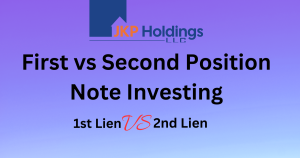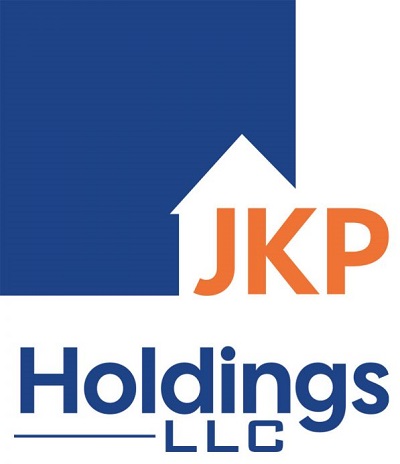Blog Posts
Difference between First vs Second Position Notes
First vs Second Position Note Investing

First vs Second Lien Notes is one of the most common questions heard when getting started in notes. But lets back up and explain that note investing. At its core, note investing revolves around the purchase or sale of the financial paperwork (or “notes”) linked with a mortgage. It’s a departure from the bricks-and-mortar style of real estate investing, pivoting instead to the very debt that finances these properties.
Real Estate Note: The Bedrock of Note Investing
At its essence, a Real Estate Note is a promise to repay a specific amount of money borrowed to purchase property. This note is secured by a deed of trust or a mortgage that encumbers the property, ensuring that the lender has recourse in the event of non-payment.
Role of a Note Investor
Unlike traditional real estate investors who focus on the tangible property, a note investor centers their attention on the debt itself. By purchasing these notes, investors are essentially stepping into the shoes of the lender, receiving the monthly payments from borrowers. In this sphere, JKP Holdings stands out as a guiding star, offering tools, resources, and training to empower note investors at every stage of their journey.
What is 1st Position Note Investing?
When we discuss 1st position notes, we’re referring to the primary or initial loan taken out on a property. It’s the “first in line” and holds a senior position in the hierarchy of debts against the property.
Imagine purchasing a home and taking out a primary mortgage; this mortgage is the 1st position note. If the borrower defaults, the holder of this note gets first dibs on any proceeds from a foreclosure sale. And for those looking to delve into this arena, JKP Holdings offers a rich selection of 1st position notes for sale, enabling investors to diversify their portfolios and tap into the world of note investing seamlessly.
As the article continues, it will further delve into the advantages and disadvantages of 1st position note investing, the intricacies of 2nd position notes, and the wealth of resources JKP Holdings provides to its clientele.
Advantages and Disadvantages of 1st Position Note Investing
The allure of 1st position note investing is evident, but like all investments, it comes with its own set of pros and cons.
Pros of 1st Note Investing:
- Priority in Payment: Being in the primary position means that in the event of foreclosure, the 1st position note holder is the first to be paid from the sale proceeds.
- Lower Risk: Generally speaking, the risk associated with 1st position notes is lower than that of subsequent notes, given their seniority in payment.
- Consistent Returns: For note investors, the monthly payments associated with these primary notes often lead to consistent and predictable returns.
Cons and Risks associated with 1st Note Investing:
- Higher Entry Cost: Due to the perceived lower risk, 1st position notes often come at a higher purchasing price.
- Market Fluctuations: Like all real estate-related investments, the value of the underlying property can fluctuate, affecting the security of the note.
Understanding 2nd Position Note Investing
Venturing into the realm of 2nd position notes requires a slightly different strategy. These notes are secondary loans taken on a property, subordinate to the 1st position note.
For instance, after taking a primary mortgage, a homeowner might decide to take a home equity line of credit (HELOC). This HELOC is a 2nd position note. The stakes are a bit different here, and JKP Holdings, recognizing the unique nature of this investment, has curated a list of 2nd position notes for sale, offering investors an alternative route to diversify their portfolios.
Advantages and Disadvantages of 2nd Position Note Investing
–
While 2nd position notes can be lucrative, they come with their own set of dynamics.
Pros of 2nd Note Investing:
- Higher Potential Returns: Given the increased risk, 2nd position notes often yield higher returns.
- Lower Entry Cost: Compared to 1st position notes, these notes are typically more affordable to purchase.
Cons and Risks associated with 2nd Note Investing:
- Subordinate Claims: In foreclosure scenarios, the 2nd note holder is paid only after the 1st note has been fully settled, leading to potential loss of investment.
- Greater Due Diligence: Ensuring that the 1st note is in good standing is crucial. This requires added due diligence, a process that JKP Holdings simplifies with its state-of-the-art “Note Investing Due Diligence tools.”
As the article progresses, it will dive deeper into the comparative risks of both investment types, the nuances of bankruptcy implications, and how JKP Holdings’ comprehensive training and resources can be pivotal in guiding both beginners and seasoned investors through the maze of note investing.
Comparing First vs Second Position Notes
With a clearer understanding of both 1st and 2nd position notes, the natural progression is to juxtapose them. Each carries its own unique blend of opportunities and challenges.
Which Lien has the Highest Priority?
Unambiguously, the 1st position lien takes precedence. In financial distress scenarios, such as a foreclosure, the 1st lien holder is the first to recoup their investment from the property’s sale proceeds. Only after settling the entirety of the first lien does the 2nd lien holder get an opportunity to claim.
Risks of 1st vs 2nd Lien Note Investing
Every investment vehicle is accompanied by risks, and note investing is no exception.
- 1st Position Notes: Their primary risk stems from market dynamics. A significant downturn in property values can erode the equity cushion, putting the note at risk. However, their senior position offers a protective buffer.
- 2nd Position Notes: These inherently carry greater risk due to their subordinate status. If a borrower defaults and the property’s value isn’t sufficient to cover both liens, the second lien holder might not recoup their investment. However, this increased risk can translate to higher potential returns.
Bankruptcy’s Effects on Both First vs Second Position Notes
Bankruptcy proceedings can introduce complexity. If a property owner declares bankruptcy:
- 1st Position Notes: These lien holders generally remain in a safer position. They’re among the first creditors to be paid, ensuring a higher likelihood of recouping their investment.
- 2nd Position Notes: These investors face greater vulnerability. If the bankruptcy proceedings don’t generate enough to cover the first lien entirely, second position note holders may receive little to nothing.
The Crucial Role of Due Diligence in Note Investing
Ensuring you’re making an informed investment decision is paramount, and that’s where due diligence enters the equation.
- For 1st Position Notes: Due diligence involves confirming the property’s value, ensuring it sufficiently covers the note, checking for any property tax arrears, and verifying the borrower’s payment history.
- For 2nd Position Notes: The process is more layered. Note investors must not only perform the aforementioned checks but also ensure that the 1st position note is in good standing. JKP Holdings, with its meticulous “Note Investing Due Diligence tools,” provides note investors with the resources to streamline this process.
JKP Holdings: Paving the Way in Note Investing
For those eager to immerse themselves in the world of note investing, JKP Holdings is a beacon. With a comprehensive suite of offerings:
- Beginner Note Investing Course and Advanced Note Investing courses to scaffold your learning journey.
- Bi-weekly live webinars on both Facebook and LinkedIn to keep you abreast of industry trends.
- A dedicated YouTube Channel and Note Investing Podcast tailored for the note investing community.
- A vibrant Facebook Group where note investors can exchange insights and experiences.
- And, of course, a selection of both 1st position and 2nd position notes for sale.
Delving Deeper: The Nuances of Note Investing
The world of note investing, though intricate, can be immensely rewarding. The key to success lies in understanding the finer details, staying updated with industry shifts, and leveraging the power of community and expertise.
1st vs 2nd Position Notes: The Practical Implications
Often, the theoretical delineation between 1st and 2nd position notes is clear. However, in the real-world scenario, the implications are multifold.
- Flexibility in Negotiations: Often, 2nd position note holders, due to the inherent risk, have more room to negotiate terms, especially if a borrower is facing financial challenges. This flexibility can result in modified terms favorable to both parties.
- Acquisition Opportunities: Due to the heightened risks associated with 2nd position notes, they often come at a discounted rate. For a discerning note investor, this can represent a golden opportunity to acquire assets with high upside potential.
Maximizing the JKP Holdings Ecosystem
JKP Holdings isn’t just a brand; it’s an ecosystem designed to foster success in note investing.
- Engaging with Live Webinars: These bi-weekly sessions, streamed on both Facebook and LinkedIn, aren’t just informative; they’re interactive. It’s an opportunity for note investors to raise queries, share experiences, and get firsthand insights from industry experts.
- Leveraging the Facebook Group: This is not just a community; it’s a think tank. From discussing the latest industry trends to seeking advice on specific deals, it’s a collaborative space for growth.
- Exploring the Note Podcast: Every episode sheds light on various facets of note investing, from the basics to advanced strategies, featuring insights from seasoned professionals.
The Road Ahead: Note Investing in the Future
The landscape of note investing is ever-evolving. With economic shifts, regulatory changes, and technological advancements, the strategies of today might need tweaks tomorrow.
- Staying Updated: The importance of continuous learning can’t be emphasized enough. JKP Holdings’ Advanced Note Investing Course is designed to cater to these evolving dynamics, ensuring that investors are always a step ahead.
- Note Investing consultant
- Diversification: As with any investment, diversification is crucial. By balancing portfolios with both 1st and 2nd position notes, investors can mitigate risks and harness opportunities across the spectrum.
Final Thoughts
Note investing, with its unique blend of challenges and rewards, offers a compelling avenue for those looking to diversify their investment portfolios. With the expertise and resources of JKP Holdings at your disposal, the journey becomes more navigable and rewarding. Whether you’re a beginner just dipping your toes or a seasoned investor looking to refine your strategies, JKP Holdings is the partner to have by your side.
JKP Holdings equips note investors with the tools, knowledge, and opportunities they need to thrive in this dynamic landscape.
Navigating the intricate realm of note investing requires clarity, diligence, and the right partner to guide the way. With the insights shared in this article and the unparalleled resources provided by JKP Holdings, both novice and seasoned investors are poised to harness the potential of both 1st and 2nd position notes effectively.
Ready to embark on your note investing journey? Explore JKP Holdings’ extensive course offerings, tap into our due diligence tools, and join our community of like-minded professionals. Dive into the world of note investing with confidence and expertise.
Invitation to the Community
Join the JKP Holdings family. Subscribe to our YouTube channel, be a part of our vibrant Facebook community, attend our webinars, and let’s redefine the future of note investing together.



